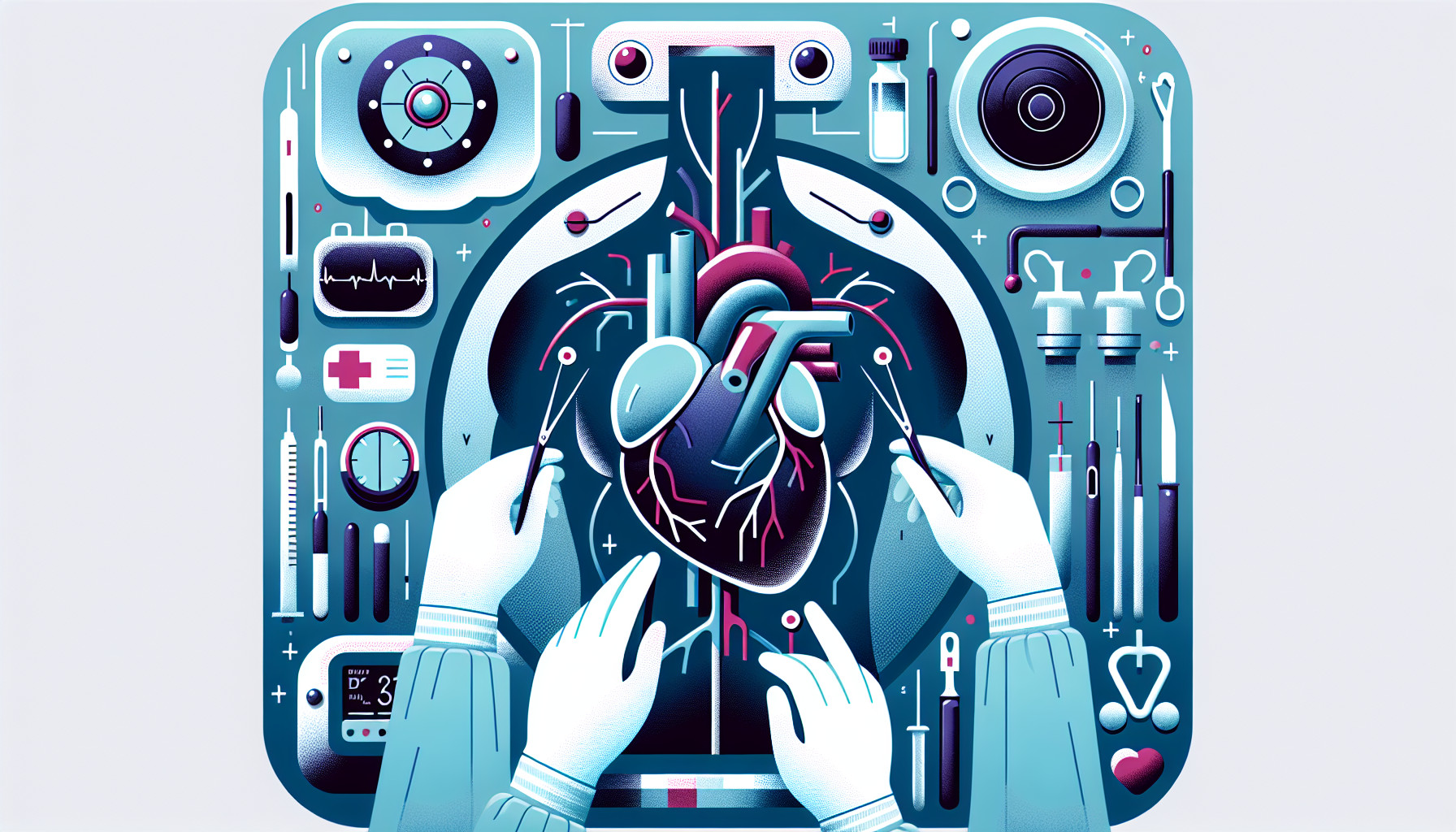Our Summary
This research paper is about a surgical procedure called coronary artery bypass grafting (CABG), which is usually done to improve blood flow to the heart in patients with severe heart diseases. There are two types of CABG - traditional CABG and off-pump coronary artery bypass graft (OPCAB). The traditional method uses a machine to take over the function of the heart and lungs during surgery, while the OPCAB method does not.
The idea is that OPCAB could lead to better long-term results by reducing complications like heart damage, stroke, and cognitive impairment during surgery, and even death due to heart-related issues. However, several high-quality studies conducted since OPCAB became popular in the 1990s have shown that it doesn’t actually provide these benefits over traditional CABG. The only advantages of OPCAB noted are less need for blood transfusions and fewer complications after surgery.
Furthermore, the research shows that OPCAB is not as effective in improving blood flow to the heart and does not completely prevent the complications that can occur with the use of the heart-lung machine. This article reviews the main high-quality studies comparing OPCAB and traditional CABG in terms of both short- and long-term results.
FAQs
- What is the Off-Pump Coronary Artery Bypass Graft (OPCAB) procedure?
- How does OPCAB compare to traditional CABG in terms of short-term and long-term outcomes?
- Does OPCAB prevent complications traditionally associated with cardiopulmonary bypass?
Doctor’s Tip
A helpful tip a doctor might tell a patient about coronary artery bypass is to discuss the potential benefits and risks of off-pump coronary artery bypass grafting (OPCAB) compared to traditional CABG. While OPCAB may offer certain short-term advantages, such as reduced transfusion requirements and postoperative complications, it is important to understand that OPCAB may not provide long-term benefits in terms of outcomes such as myocardial injury, stroke, neurocognitive impairment, and cardiac-related mortality. Patients should have a thorough discussion with their healthcare provider to make an informed decision about the most appropriate treatment option for their individual situation.
Suitable For
Patients who are typically recommended for coronary artery bypass grafting (CABG) include those with left main or three-vessel coronary artery disease. These patients may have significant blockages in multiple coronary arteries that cannot be effectively treated with other interventions such as medication or angioplasty. Additionally, patients with severe coronary artery disease who have symptoms such as chest pain, shortness of breath, or decreased exercise tolerance may also be candidates for CABG. Patients with a history of heart attacks, heart failure, or other complications related to coronary artery disease may also benefit from CABG. Ultimately, the decision to recommend CABG is based on the individual patient’s specific medical history and risk factors, and is typically made in consultation with a cardiologist or cardiac surgeon.
Timeline
Before coronary artery bypass surgery, a patient typically undergoes various diagnostic tests such as an electrocardiogram (ECG), echocardiogram, stress test, and coronary angiography to evaluate the extent of coronary artery disease. The patient may also undergo medical optimization and lifestyle modifications to reduce the risk of complications during surgery.
During the surgery, the patient is placed under general anesthesia and the surgeon makes an incision in the chest to access the heart. The surgeon then harvests a healthy blood vessel, usually from the leg or chest, and grafts it onto the blocked coronary artery to bypass the blockage and restore blood flow to the heart muscle. The patient may be placed on cardiopulmonary bypass, where a machine takes over the function of the heart and lungs during the surgery.
After the surgery, the patient is closely monitored in the intensive care unit (ICU) for a few days to ensure proper recovery. The patient may experience pain, fatigue, and difficulty breathing in the immediate postoperative period. Physical therapy and cardiac rehabilitation may be recommended to help the patient regain strength and function.
In the long term, the patient will need to follow a comprehensive care plan that includes medication management, lifestyle modifications, and regular follow-up appointments with their healthcare provider. The patient may also be referred to cardiac rehabilitation to improve cardiovascular health and reduce the risk of future heart problems. It is important for the patient to adhere to their treatment plan and make healthy choices to optimize their outcomes after coronary artery bypass surgery.
What to Ask Your Doctor
- What are the potential risks and benefits of undergoing coronary artery bypass surgery?
- Is off-pump coronary artery bypass grafting (OPCAB) a suitable option for my specific condition?
- How does OPCAB compare to traditional CABG in terms of effectiveness and long-term outcomes?
- What is the success rate of OPCAB surgery in patients with my specific medical history?
- Are there any specific factors that may make me a better candidate for OPCAB over traditional CABG?
- What is the recovery process like for OPCAB surgery compared to traditional CABG?
- Will I need any additional follow-up care or monitoring after undergoing OPCAB surgery?
- Are there any alternative treatment options to consider before deciding on OPCAB surgery?
- How experienced is the surgical team in performing OPCAB procedures?
- Are there any lifestyle changes or medications I should consider after undergoing OPCAB surgery to improve my long-term outcomes?
Reference
Authors: Shaefi S, Mittel A, Loberman D, Ramakrishna H. Journal: J Cardiothorac Vasc Anesth. 2019 Jan;33(1):232-244. doi: 10.1053/j.jvca.2018.04.012. Epub 2018 Apr 4. PMID: 29753665
